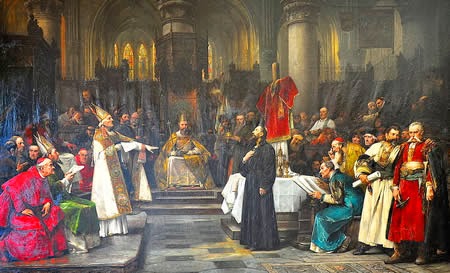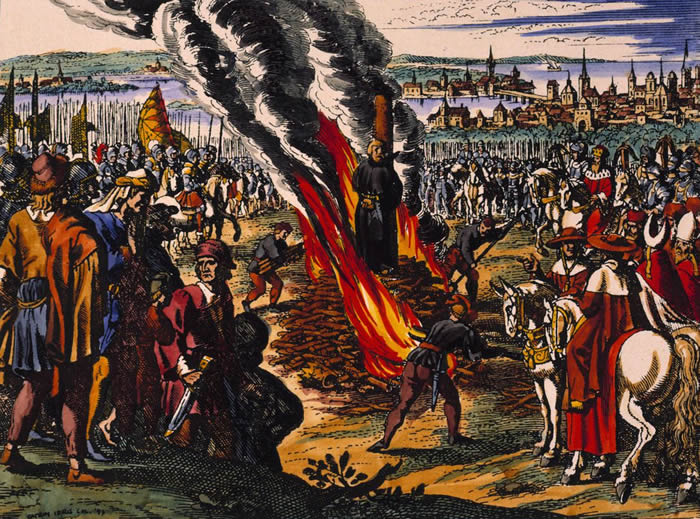 |
| The Council of Constance |
The Council of Constance was the last and most successful of a series of church councils called to heal the division in the Catholic Church between followers of the popes in Avignon and followers of the popes in Rome. By the time the council was actually convened, on November 1, 1414, there was also a third, consiliar papacy, set up by the Council of Pisa in 1409, in a failed attempt at a fresh start.
Unlike Pisa the new council involved secular princes as well as ecclesiastics, convoked by the Holy Roman Emperor Sigismund as well as by the antipope John XXIII. John, who held the loyalty of the ecclesiastics attending the council, hoped to use it to his own ends, but the council went against him, partly because of the scandalous life that made him seem unfit for the position of vicar of Christ.
John’s plan to have the council vote by head, which would enable him to use the majority of Italians loyal to him, was defeated in favor a plan to vote by nation. Each national delegation (Italian, German, French, and English) would decide its position, and a majority of nations would carry the vote.
  |
After John fled the council and was forcibly returned, he was formally deposed in May 1415, and the church was declared without a head. The problem of the Roman line was settled when Gregory XII abdicated on July 4, although not before his representative had formally reconvened the council, giving it legitimacy in Roman eyes.
The Avignon pope, Benedict XIII, never formally abandoned power. However, his (principally Spanish) allies quietly deserted him and generally acquiesced in the election of Cardinal Odo Colonna as Pope Martin V in 1417.
 |
| John Huss was burned on July 6, 1415 |
The other great problem the council faced was the growth of heresy, particularly that of the Wycliffites or Lollards in England and the Hussites in Bohemia. John Huss had traveled to the council on a vow of safe conduct granted by Sigismund.
He hoped to explain and vindicate his positions, but once in Constance he found himself subject to an ecclesiastical trial carried on by the council. (There was a legal argument that church authorities were not bound by a safe conduct vow given by a secular prince like Sigismund to a man suspected of heresy.)
Huss was burned on July 6, 1415. The next year Huss’s disciple, Jerome of Prague, who had fled the council and been taken back in chains, followed him into the flames. The council also condemned John Wycliffe’s teachings and ordered his body removed from consecrated ground.
   |
Some hoped that the council could reform the church and exert an authority superior to the popes’. The conciliar decree Haec Sancta, passed in 1415, declared that the council derived its power from Christ and that all Christians, including the pope, owed it obedience.
In 1417 the council passed a decree providing for regular councils, but Pope Martin took a high view of papal supremacy over the church. A struggle between the council and the pope was averted when Martin offered concessions to national delegations in return for agreeing in the council’s dissolution and declared the council dissolved in May 1418.